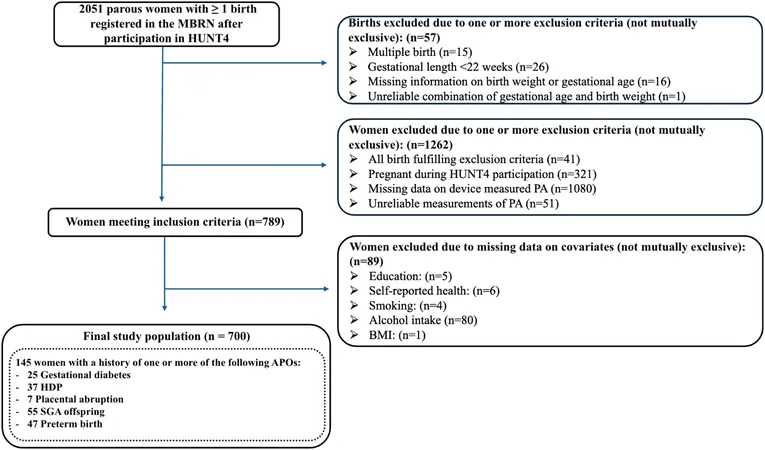
Unlocking the Secrets: How Pre-Pregnancy Physical Activity Can Reduce Pregnancy Risks
2025-06-07
Author: Arjun
Understanding Adverse Pregnancy Outcomes (APOs)
Adverse pregnancy outcomes (APOs), such as gestational diabetes and hypertensive disorders, pose serious risks to both mothers and their babies. These complications can lead to long-term health issues, including a higher chance of cardiovascular diseases later in life for both mothers and their offspring. Tackling the factors contributing to these outcomes is vital for enhancing maternal and child health.
The Role of Physical Activity in Pregnancy
Physical activity is fundamental for a healthy lifestyle, as recognized by the World Health Organization (WHO), which recommends adults to engage in at least 150 minutes of moderate aerobic exercise weekly. Surprisingly, only 25% of adults meet this benchmark, highlighting a gap in maintaining health. Interestingly, even light activities, like walking, can significantly boost overall health.
Linking Physical Activity with Pregnancy Health Risks
Research indicates that women who engage in regular physical activity before and during pregnancy can lower their risk of developing conditions like preeclampsia or gestational diabetes. The key findings suggest that increased physical activity prior to pregnancy might offer more substantial protection than during pregnancy itself.
Exploring the HUNT Study
The latest study, part of the Trøndelag Health Study (HUNT4), looked at women in Norway, gathering data on their physical activity before pregnancy through advanced devices that monitor movement. This study included over 30,000 women, providing a comprehensive view of how lifestyle choices impact pregnancy outcomes.
Methodology and Data Collection
Participants wore accelerometers to track their daily physical activities, with rigorous data collection over seven days. This objective measure of activity levels differed from past studies, which predominantly relied on self-reports—often inconsistency plagued those findings.
Key Findings: Impacts of Activity Levels on Adverse Outcomes
The study found that participants with higher levels of daily physical activity had a significantly reduced risk of experiencing APOs. In fact, those in the highest activity group were 40% less likely to face complications compared to those in the lowest activity group. Notably, the odds of developing gestational diabetes dropped dramatically among active participants.
Demographics and Health Insights
The average age of participants was 28.3, and many reported good health status. Interestingly, women who were active pre-pregnancy showed marked differences in their health profiles compared to others, including lower rates of obesity and smoking.
Broader Implications and Recommendations
This research underlines the importance of physical activity in mitigating risks associated with pregnancy. It suggests women planning to conceive should be encouraged to engage in regular physical activity as part of preconception counseling, aiming to enhance health and reduce risks for complications.
Final Thoughts: Bridging Research and Practice
While further studies are necessary to confirm these findings, the strong correlation between elevated physical activity levels and lower risks of adverse pregnancy outcomes provides a compelling argument for prioritizing exercise in women's health routines. Encouraging active lifestyles could be a straightforward yet powerful strategy to improve maternal and child health.



 Brasil (PT)
Brasil (PT)
 Canada (EN)
Canada (EN)
 Chile (ES)
Chile (ES)
 Česko (CS)
Česko (CS)
 대한민국 (KO)
대한민국 (KO)
 España (ES)
España (ES)
 France (FR)
France (FR)
 Hong Kong (EN)
Hong Kong (EN)
 Italia (IT)
Italia (IT)
 日本 (JA)
日本 (JA)
 Magyarország (HU)
Magyarország (HU)
 Norge (NO)
Norge (NO)
 Polska (PL)
Polska (PL)
 Schweiz (DE)
Schweiz (DE)
 Singapore (EN)
Singapore (EN)
 Sverige (SV)
Sverige (SV)
 Suomi (FI)
Suomi (FI)
 Türkiye (TR)
Türkiye (TR)
 الإمارات العربية المتحدة (AR)
الإمارات العربية المتحدة (AR)